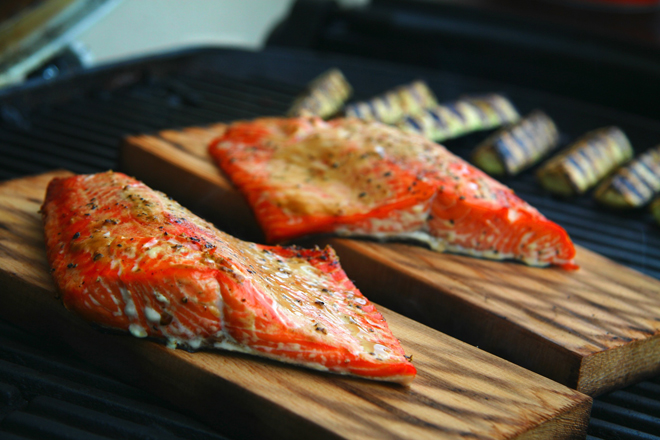By Dr Katie DeGroot, ND –
At some point, you may have heard that fats are bad for you. But have you ever heard of omega 3 fatty acids, a kind of fat that is actually good for you?

Omega 3 fatty acids are a type of fat that is critical to optimal health and well-being. Just like any other vitamin or mineral, omega 3 fatty acids are an essential part of a balanced diet, as our body can only obtain them from the foods we eat or the supplements we take.
Within the broad category of omega 3 fatty acids, there are three major sub-types: alpha linolenic acid (ALA), eicosapentaenoic acid (EPA), and docosahexaenoic acid (DHA).
ALA is considered the most basic of all omega 3 fatty acids. It is predominantly found in high-fat plant-based foods such as nuts and seeds. Gram for gram, the highest amounts of ALA are found in chia seeds, flax seeds, walnuts, and pecans. Depending upon your age and gender, Canadian experts recommended consuming between 1.1 and 1.6 grams of ALA per day. In the body, ALA plays a role in maintaining skin health and influencing the processes of inflammation. ALA can also be converted to the other two types of omega 3 fatty acids, EPA and DHA.
Comparative to ALA, EPA and DHA are considered “higher level” omega 3 fatty acids—they are produced from ALA and have more specific roles in the body. Both EPA and DHA act to reduce inflammation and promote and maintain brain, heart, skin, and joint health.
While the human body can convert ALA to EPA and DHA, it is a slow process—only 4 to 8 percent of consumed ALA is converted to EPA or DHA. Therefore experts suggest the best way to obtain EPA and DHA is to consume foods already high in EPA and DHA—primarily seafood and fish. Gram for gram, some of the foods highest in EPA and DHA are anchovies, caviar, herring, mackerel, mussels, oysters, salmon, sardines, and trout. Given the essential nature of omega 3 fatty acids, experts recommend consuming between 0.3 and 0.45 grams of EPA and DHA per day, or 1.5 to 3.15 grams of EPA and DHA per week.
Capered Citrus Salmon
This is a very simple yet tasty salmon dish with adjustable ingredients and multiple cooking options. Depending upon the amount of fish used, this recipe makes between 4 and 8 servings (approx. 1 serving per ½ pound fish). And depending on salmon species used, each serving should contain between 1.5 and 5.25 grams of EPA and DHA.
For the Sauce:
Ingredients
3 Tablespoons lemon juice
4 Tablespoons olive oil
2 Tablespoons butter
2 Tablespoons mustard (yellow works just fine, but use Dijon if you’re feeling fancy)
4 small or 2 large garlic cloves, minced, or ½ tsp garlic powder or 2 tsp garlic flakes
¼ teaspoon cayenne pepper
¼ teaspoon salt
2 teaspoons dried basil or 2 Tablespoons fresh basil, finely chopped
2 teaspoons dried dill or 2 Tablespoons fresh dill, finely chopped
1 Tablespoon capers, drained
Method
In a small sauce or fry pan, combine all ingredients listed above. On medium heat, stir well and bring to a boil. Then turn to low and simmer for 5 minutes, stirring occasionally. Increase or decrease the amount of sauce made to personal preference and taste—if you like a strong flavoured sauce, serve as above on 2 lbs of fish. Or if you like a lighter flavour, prepare sauce as above for 4 lbs fish or half the sauce recipe and cook with 2 lbs fish.
For the Salmon:
Ingredients
2 to 4 pounds fresh salmon filets
Cooking Option 1: Poaching
Pour sauce into a thick-bottomed pot capable of holding fillets with only a minimal amount of overlap. Heat sauce until just boiling, and then add fillets skin-side down (sauce should just cover the meat). Cover pot with lid and cook on low to medium low heat, adjusting temperature as needed to ensure a slow simmer but prevent a rapid boil. Cook for 10 to 15 minutes or until fish is cooked.
Cooking Option 2: Grilling
Place fillets skin-down on a barbeque-safe pan or wrap fillets in tinfoil. Pour sauce over fillets, place fish on barbeque and close lid. Grill at around 350 degrees F for 10 to 15 minutes or until fully cooked.
Cooking Option 3: Oven
Pre-heat oven to 350 degrees F. Place fish in an oven-proof dish (skin-side down), pour sauce over top, cover with lid, and bake until cooked—between 15 to 20 minutes, depending upon your oven.
When fully cooked (by any method above), fish should be flaky and light pink throughout, and the skin should be easy to separate. Serve on a bed of rice or other grain or starchy food. Recipe adapted from Portland’s Palate.
Dr. Katie DeGroot is a naturopathic doctor who also holds a Master’s of Science in Nutrition. She works at Integrated Elements Wellness Clinic in both Williams Lake and 100 Mile House, and is currently accepting new patients at both clinic locations.
